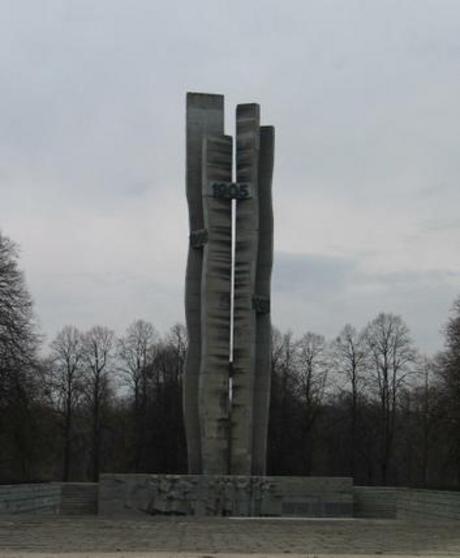Monuments to the Poland’s Insurrection
Designed by Franciszek Karpiński the Monument to the 1905 Insurrection is typical of 70s Polish art, and commemorates the 1905 industrial insurrection against Imperial Russia.
The Łódź insurrection, also known as the June Days, was an uprising by Polish workers in Łódź against the Russian Empire on 21–25 June 1905. It was one of the largest disturbances in the Russian-controlled Congress Poland during the Russian Revolution of 1905. Poland was a major center of revolutionary fighting in the Russian Empire in 1905–1907, and the Łódź insurrection was a key incident in those events.
At the beginning of the 20th century, worsening economic conditions contributed to mounting tensions in Russia and Poland: the Russo-Japanese War had damaged the economy of the Kingdom of Poland, and by late 1904, over 100,000 Polish workers had lost their jobs. In the 19th century, Łódź had been a major Polish industrial center, heavily urbanized and industrialized, and a stronghold of the socialist movement. News of the 1905 Russian revolution, together with its revolutionary spirit, spread quickly into Russian-controlled Poland from Saint Petersburg, where demonstrators had been massacred on 22 January. Workers in Łódź had already begun striking sometime before 22 January, and by 31 January the Tsarist police were reporting demonstrators carrying placards with slogans such as "Down with the autocracy! Down with the war!". This was capitalized on by factions in Russia and Poland that wanted more or less radical changes. Soon over 400,000 workers became involved in strikes in Poland.
The wing of the Polish Socialist Party (Polska Partia Socjalistyczna, PPS) that was loyal to Józef Piłsudski believed that Poles must show their determination to regain independence through active, violent protests against the Russians.
Tensions mounted further, and in the evening of 21 or 22 June (sources vary), angry workers began building barricades and assaulting police and military patrols, killing those who did not surrender. About a hundred barricades would be constructed over the course of the next few days. Around the Wschodnia street, workers opened fire on a company of soldiers and cavalry, and on Południowa street, a unit of gendarmes was surrounded. Several fires begun in the town, as workers set some liqueur stores on fire, and the government forces assaulted first barricades, initially without much success. The tsarist representatives called from reinforcements, which came from Częstochowa, Warsaw, and summer training camps. Several infantry regiments entered the city. Eventually, Russian forces sent to suppress the workers numbered six infantry regiments and several cavalry regiments.
Dominating the north end of Piotrkowska stand the towering figure of Poland’s most celebrated revolutionary. As the driving force behind the 1794 insurrection against foreign rule Tadeusz Kościuszko's finest moment came in the Battle of Racławica where his band of peasant soldiers scored a historic win over the Russian army. His life also saw him fight with distinction in the American War of Independence, and his work on American fortifications made a significant contribution to victories over the British at Saratoga and Ticonderoga. The statue, designed by Mieczysław Lubelski was erected in 1930, but was demolished in 1939 by occupying Wehrmacht forces. It was rebuilt in 1960.



